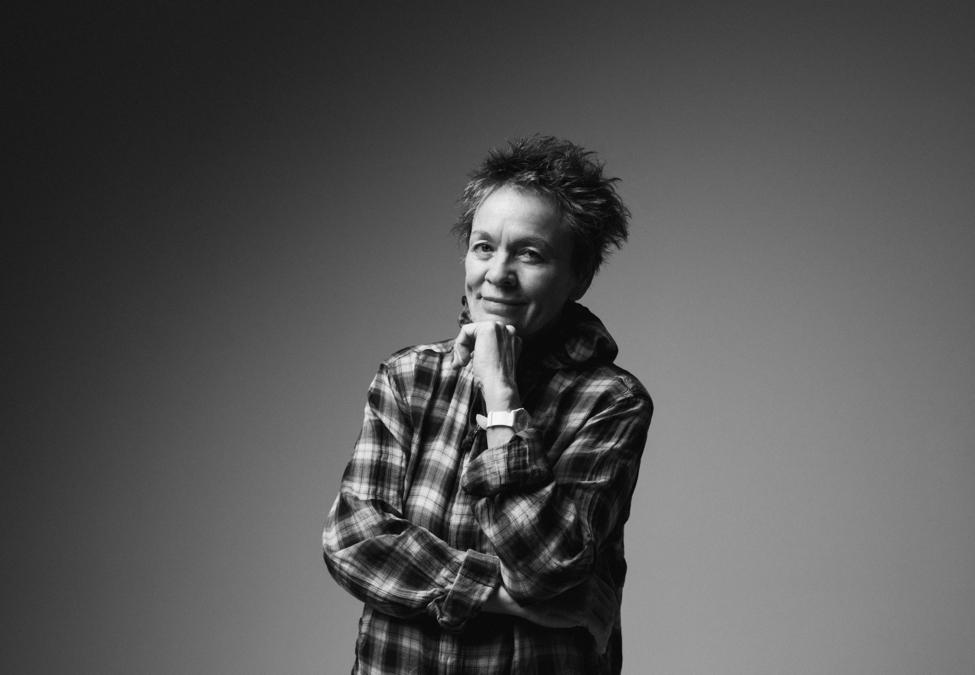Art Intelligence
“The duty of the artist is to respond to and reflect upon the human experience,” says Tom Hajdu, Director of the Sia Furler Institute. "The edges of that experience are now clearly being challenged by the machines that we are rapidly welcoming into our lives. At this pivotal moment in human history, deep and sustained dialogue between artists and technologists feels essential."

Laurie Anderson - photo by Ebru Yildiz
Artist residency
The centerpiece of these initiatives is an artist-in-residence program, with American avant-garde artist Laurie Anderson as its first resident. Anderson is a performance artist, composer, musician, and film director whose work has spanned the media spectrum. She notes of this opportunity: “When people say the purpose of art is to make the world a better place I always think: better for who? Art is not medicine or science. It’s not about creative problem solving. If I had to use one word to describe art it would be freedom. I’m curious about whether this freedom can be translated or facilitated by AI in a meaningful way.”
Such queries posed by resident artists and the creative experiments they incite will be shared with the public via MURMUR – an online and offline exhibition space nested within Art Intelligence to capture emergent thinking and creative forms born of the artist-engineer collaboration process.
International working group
Additional contributors to MURMUR include an international working group of curators, scholars, and activists who will reflect together about diverse philosophical and ethical facets of AI, and are charged with nominating future artist-residents.
The group is convened by the Netherlands-based research and curatorial platform Slow Research Lab. The platform’s director Carolyn F. Strauss has invited the group to explore ‘Not-Knowing’ as a tool for embracing the field of AI. She explains, “Not-Knowing offers an expanded space for both reflection and encounter. One that can hold a myriad of bodies and stories, tempos and temporalities, and as such can be a portal to new forms of caring and community. Looking at AI through this lens helps chart critical and truly pluralistic trajectories of artistic expression for our shared planetary future.”
The working group's members include: Dakin Hart (Noguchi Museum, New York); Amanda de la Garza (MUAC, Mexico City); Stephanie Rosenthal (Gropius Bau, Berlin); Nancy Adajania and Ranjit Hoskote (curators and cultural theorists, Mumbai); Uzma Rizvi (Pratt Institute, New York); Rory Pilgrim (artist-activist, Rotterdam); Sigríður Sigurjónsdóttir (Museum of Design and Applied Arts, Iceland); and Enrique Rivera (Media Arts Biennial, Santiago).
International Partnerships
Also linked to these new initiatives are several international partnerships. These include a relationship with the Computer Music Center at Columbia University to leverage opportunities at the intersection of music and AI.
"The CMC has been at the forefront of emerging creativity since the 1950’s" said Brad Garton, Director of the Computer Music Center. "The possibilities of this new relationship with the Art Intelligence program ensures that we stay in that leading position.”
Leadership team
Art Intelligence initiatives are governed by a Board consisting of members of the Australian Institute for Machine Learning and the Sia Furler Institute, along with local and international thought leaders and creative pioneers.
“This project will help shape the future of AI and of art,” says Anton van den Hengel, the Director of AIML. “There is a lot of art about AI, but very little that is AI. We’re aiming to change that.”
For more information: artintelligence.ai
